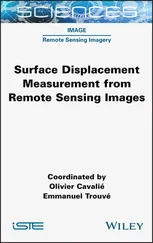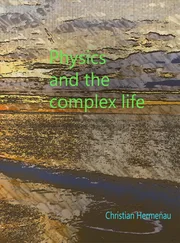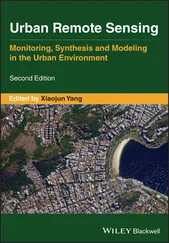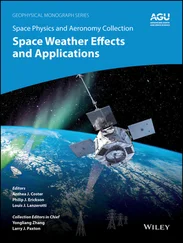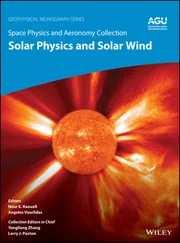The wave absorption is a result of the fact that usually N i> N j. If this inequality can be reversed, the wave would be amplified. This requires that the population in the higher level is larger than the population in the lower energy level. This population inversion is the basis behind laser and maser operations. However, it is not usually encountered in the cases of natural matter/waves interactions which form the topic of this text. ( Note: Natural maser effects have been observed in astronomical objects; however, these are beyond the scope of this text.)
The transition between different levels in usually characterized by the lifetime τ . The lifetime of an excited state i is equal to the time period after which the number of excited atoms in this state have been reduced by a factor e −1. If the rate of transition out of the state i is A i, the corresponding lifetime can be derived from the following relations:
(2.46) 
(2.47) 
(2.48) 
If the transitions from i occur to a variety of lower levels j , then
(2.49) 
(2.50) 
2.6 Interaction Mechanisms Throughout the Electromagnetic Spectrum
Starting by the highest spectral region used in remote sensing, gamma‐ and x‐ray interactions with matter call into play atomic and electronic forces such as the photoelectric effect (absorption of photon with ejection of electron), Compton effect (absorption of photon with ejection of electron and radiation of lower energy photon), and pair production effect (absorption of photon and generation of an electron–positron pair). The photon energy in this spectral region is larger than 40 eV ( Fig. 2.15). This spectral region is used mainly to sense the presence of radioactive materials.
In the ultraviolet region (photon energy between 3 and 40 eV), the interactions call into play electronic excitation and transfer mechanisms, with their associated spectral bands. This spectral region is used mostly for remote sensing of the composition of the upper layers of the Earth and planetary atmospheres. An ultraviolet spectrometer was flown on Voyager spacecraft to determine the composition and structure of the upper atmospheres of Jupiter, Saturn, and Uranus.
In the visible and near infrared (energy between 0.2 and 3 eV), vibrational and electronic energy transitions play the key role. In the case of gases, these interactions usually occur at well‐defined spectral lines, which are broadened due to the gas pressure and temperature. In the case of solids, the closeness of the atoms in the crystalline structure leads to a wide variety of energy transfer phenomena with broad interaction bands. These include molecular vibration, ionic vibration, crystal field effects, charge transfer, and electronic conduction. Some of the most important solid surface spectral features in this wavelength region include the following: (1) the steep fall‐off of reflectance in the visible toward the ultraviolet and an absorption band between 0.84 and 0.92 μm associated with the Fe 3+electronic transition. These features are characteristic of iron oxides and hydrous iron oxides, collectively referred to as limonite. (2) The sharp variation of chlorophyll reflectivity in the neighborhood of 0.75 μm, which has been extensively used in vegetation remote sensing. (3) The fundamental and overtone bending/stretching vibration of hydroxyl (OH) bearing materials in the 2.1–2.8 μm region, which are being used to identify clay‐rich areas associated with hydrothermal alteration zones.
In the mid‐infrared region (8–14 μm), the Si‐O fundamental stretching vibration provides diagnostics of the major types of silicates ( Fig. 2.16). The position of the restrahlen bands, or regions of metallic‐like reflection, is dependent on the extent of interconnection of the Si‐O tetrahedra comprising the crystal lattice. This spectral region also corresponds to vibrational excitation in atmospheric gaseous constituents.
In the thermal infrared, the emissions from the Earth’s and other planets’ surfaces and atmospheres are strongly dependent on the local temperature, and the resulting radiation is governed by Planck’s law. This spectral region provides information about the temperature and heat constant of the object under observation. In addition, a number of vibrational bands provide diagnostic information about the emitting object constituents.

Figure 2.15 Correspondence of spectral bands and photon energy and range of different wave–matter interaction mechanisms of importance in remote sensing. The photon energy in electron volts is given by E (eV) = 1.24/ λ , where λ is in μm.
In the submillimeter region, a large number of rotational bands provide information about the atmospheric constituents. These bands occur all across this spectral region, making most planetary atmospheres completely opaque for surface observation. For some gases such as water vapor and oxygen, the rotational band extends into the upper regions of the microwave spectrum.
The interaction mechanisms in the lower frequency end of the spectrum ( ν < 20 GHz, λ > 1.5 cm) do not correspond to energy bands of specific constituents. They are rather collective interactions which result from electronic conduction and nonresonant magnetic and electric multipolar effects. As a wave interacts with a simple molecule, the resulting displacement of the electrons results in the formation of an oscillating dipole which generates an electromagnetic field. This will result in a composite field moving at a lower speed than the speed of light in a vacuum. The effect of the medium is described by the index of refraction or the dielectric constant. In general, depending on the structure and composition of the medium, the dielectric constant could be anisotropic or could have a loss term which is a result of wave energy transformation into heat energy.
In the case of an interface between two media, the wave is reflected or scattered depending on the geometric shape of the interface. The physical properties of the interface and the dielectric properties of the two media are usually the major factors affecting the interaction of wave and matter in the microwave and radio frequency part of the spectrum. Thus, remote sensing in this region of the spectrum will mainly provide information about the physical and electrical properties of the object instead of its chemical properties, which are the major factors in the visible/infrared region, and its thermal properties, which are the major factors in the thermal infrared and upper microwave regions (see Table 2.2).
Читать дальше







